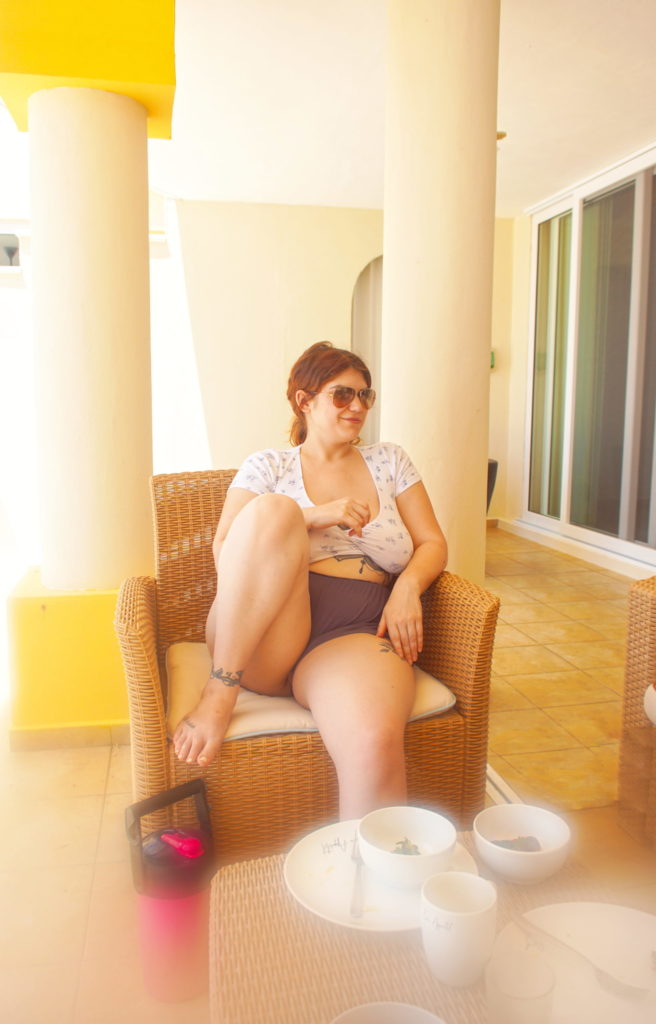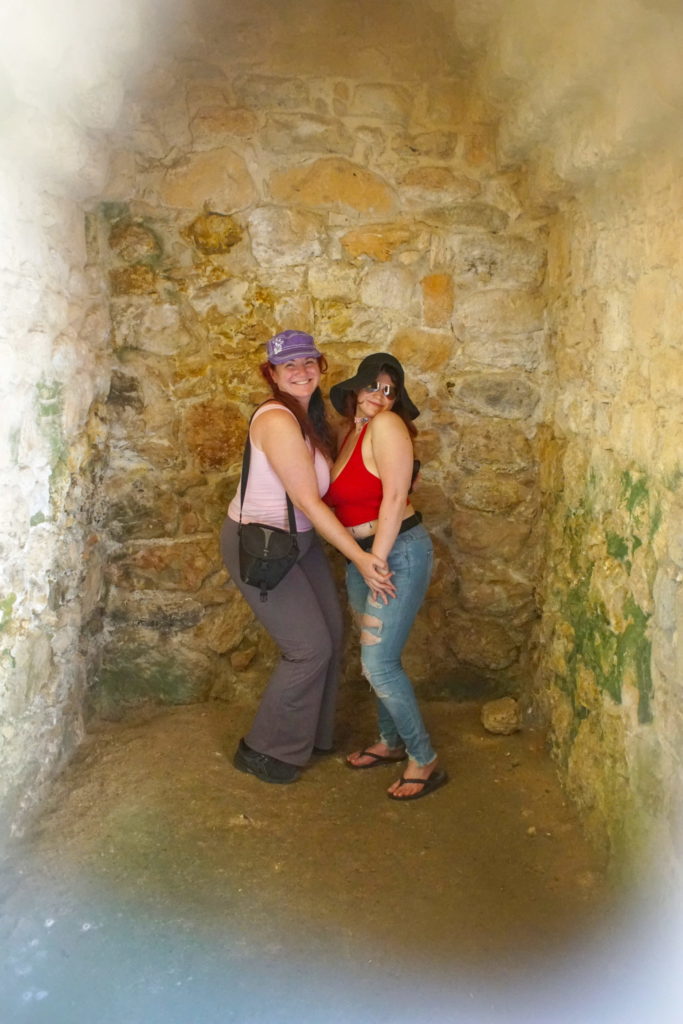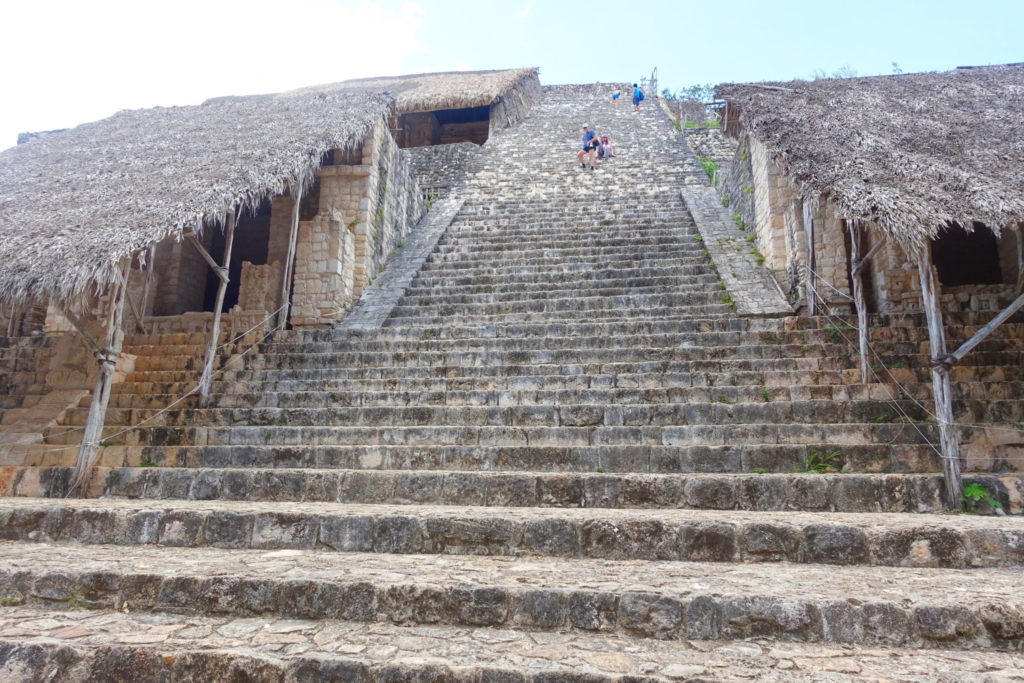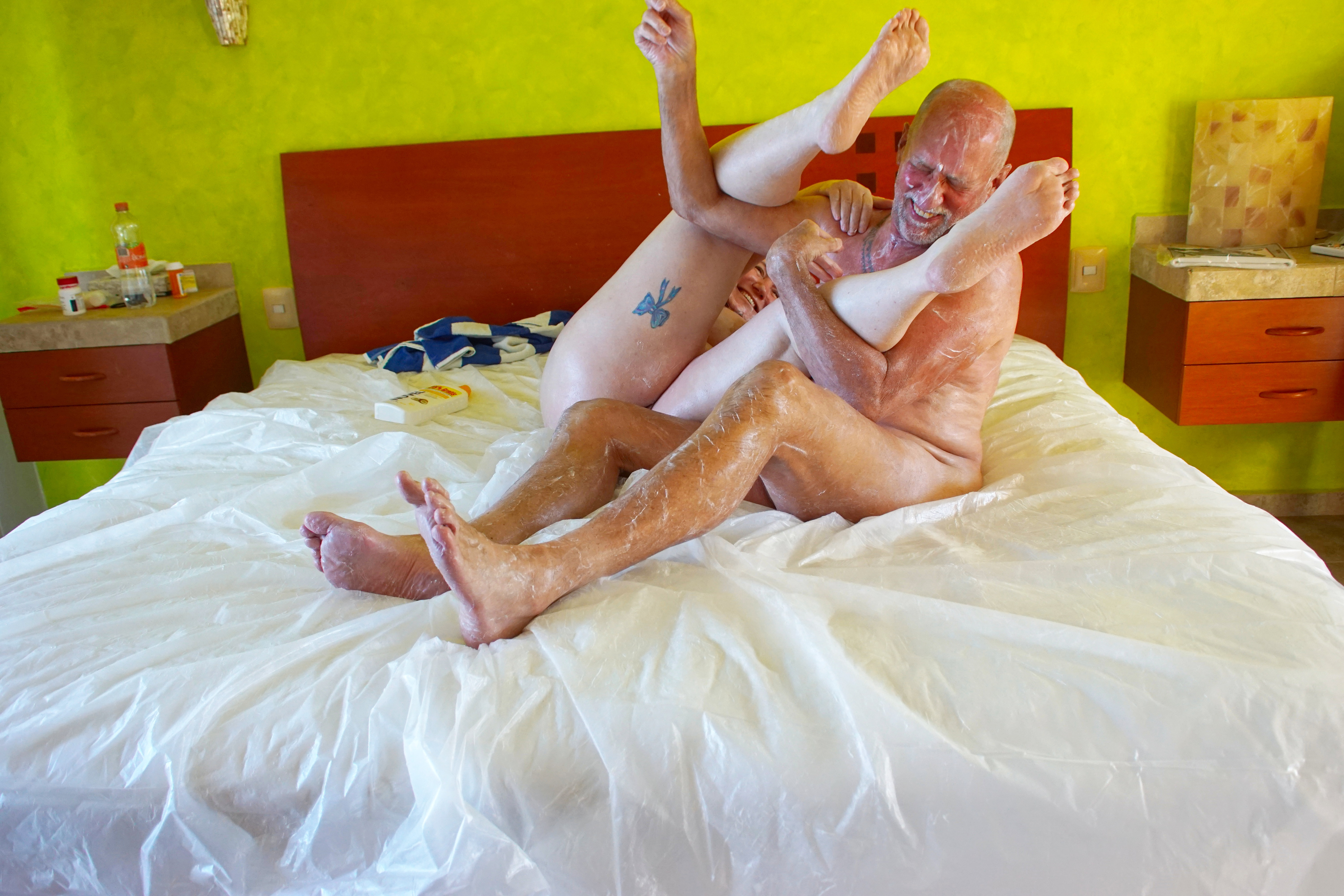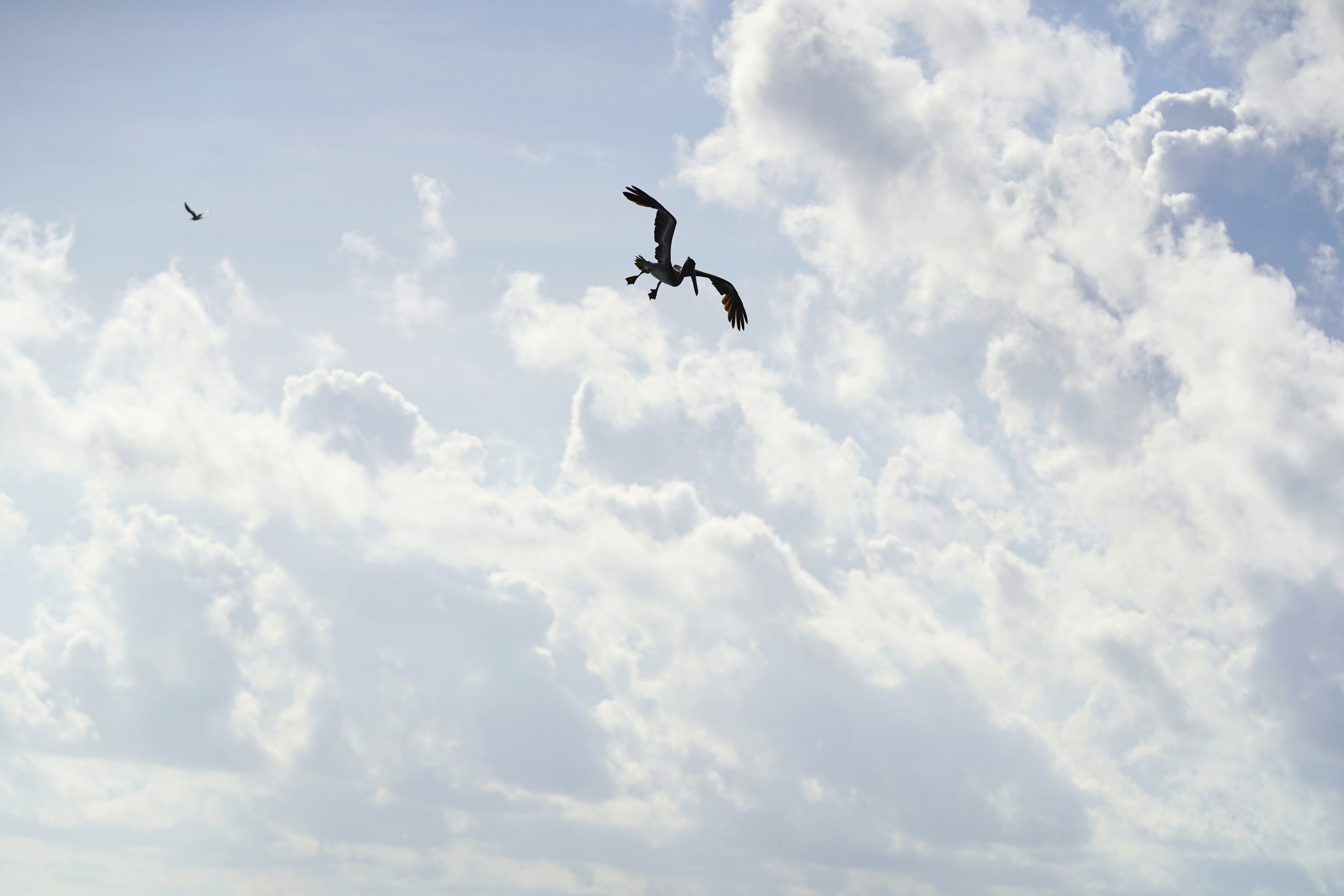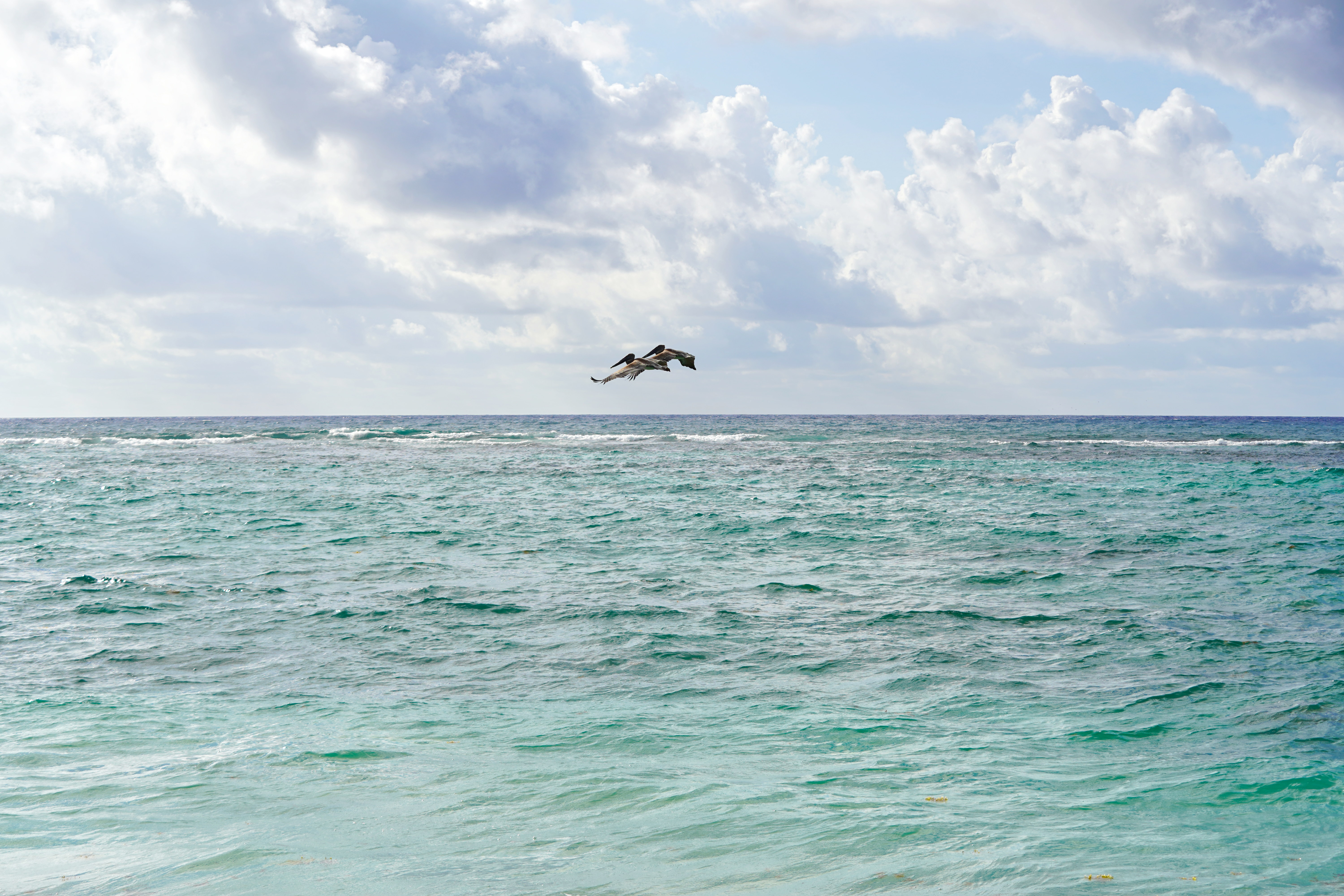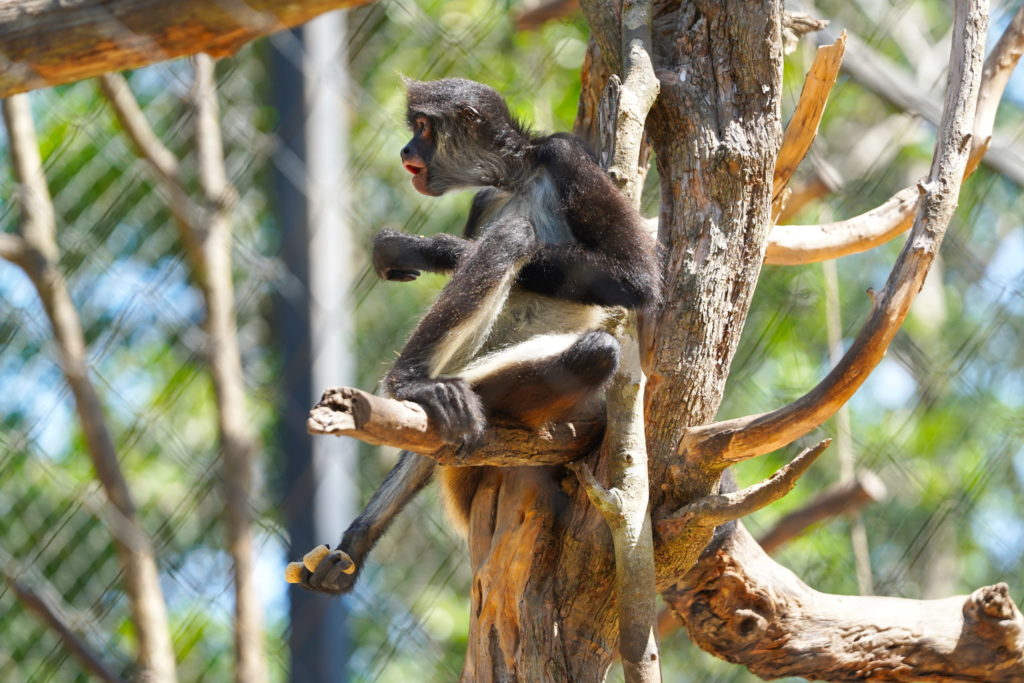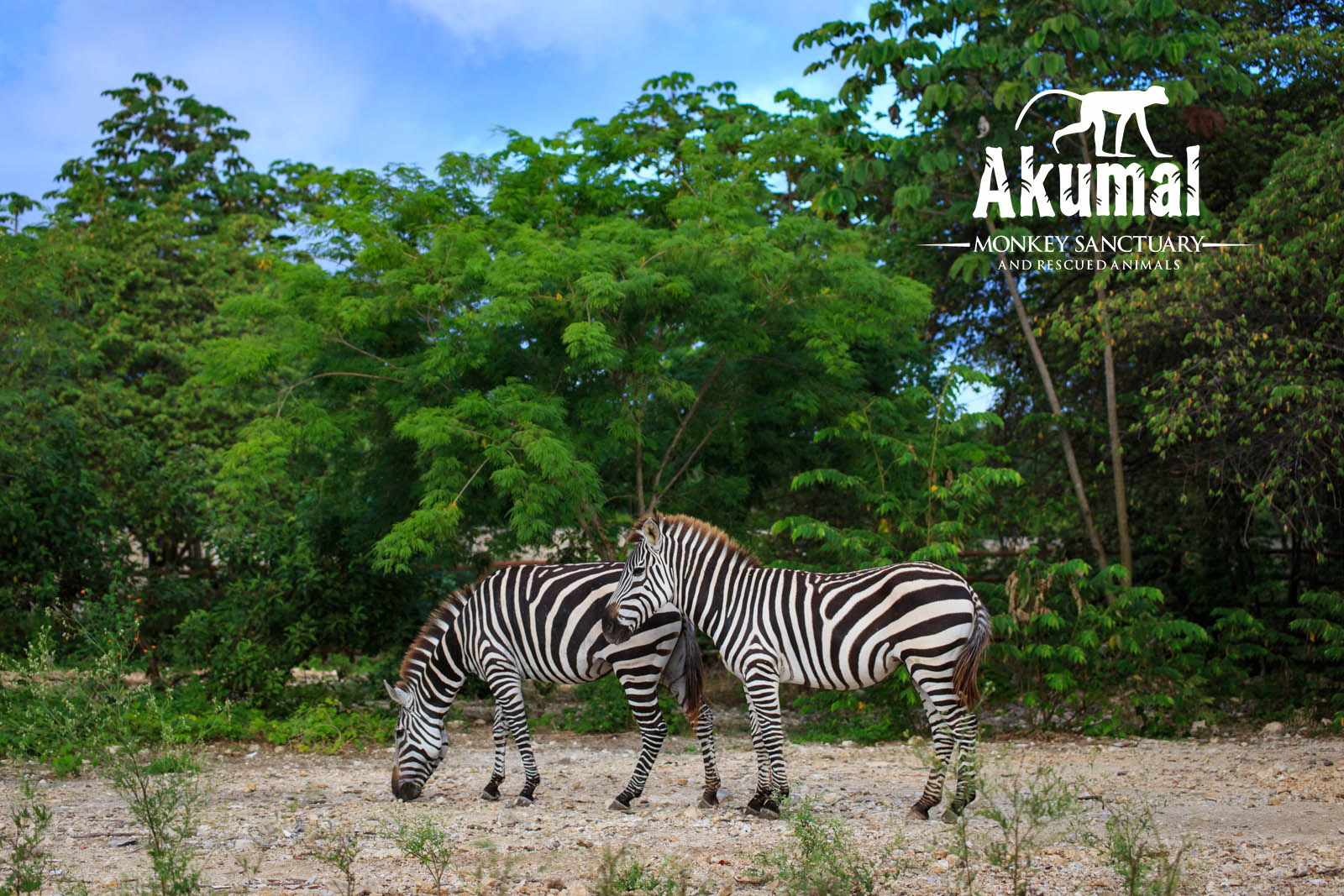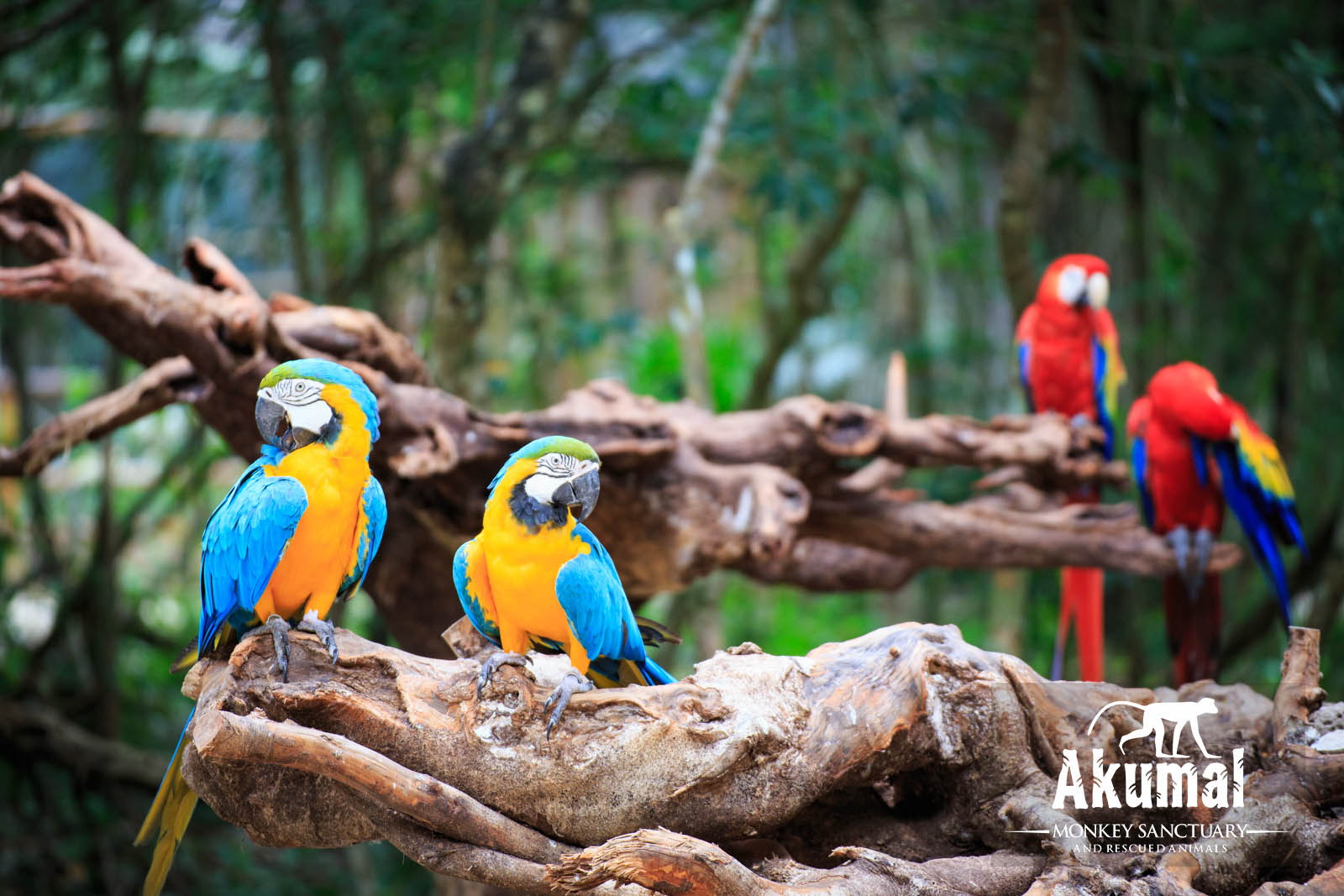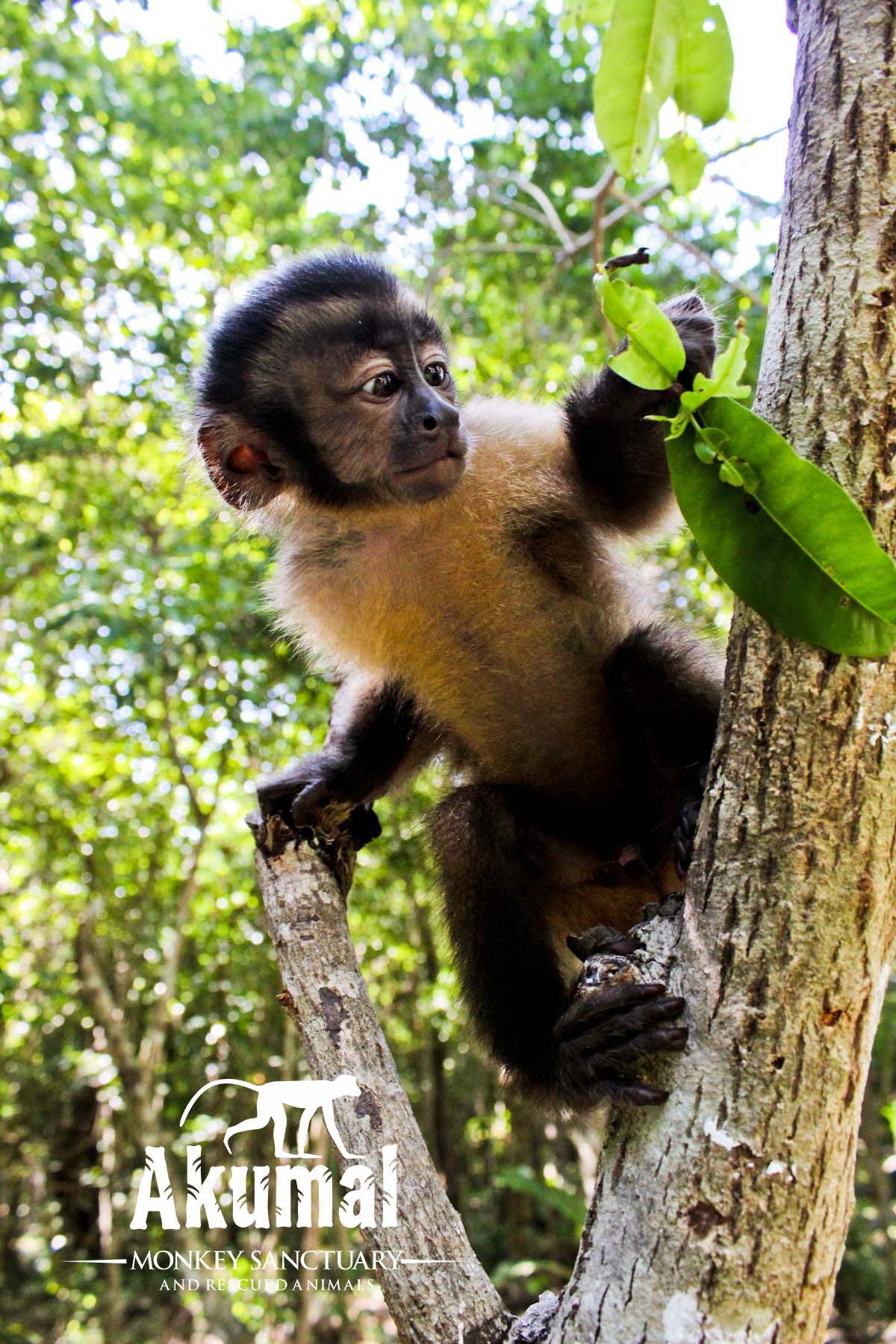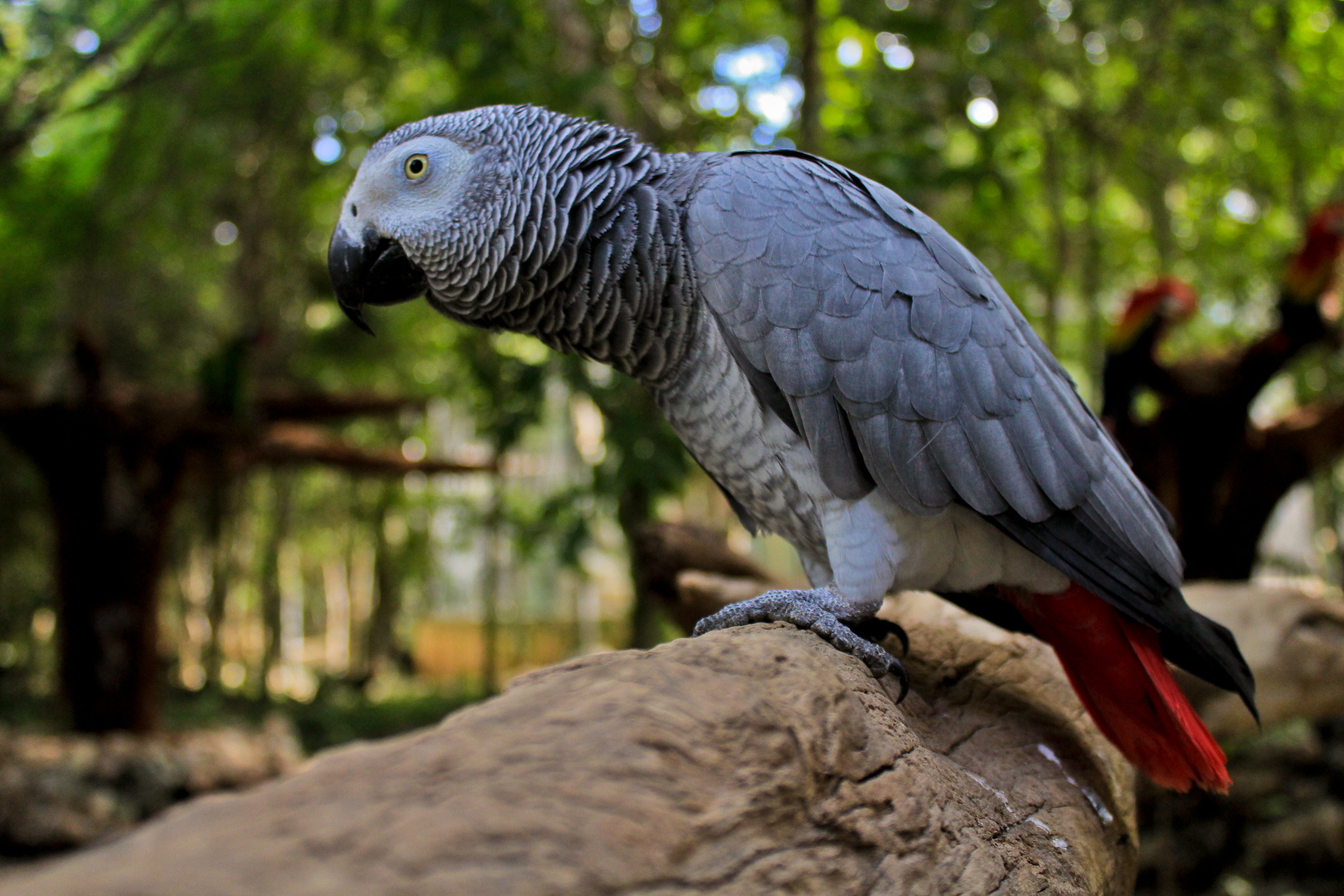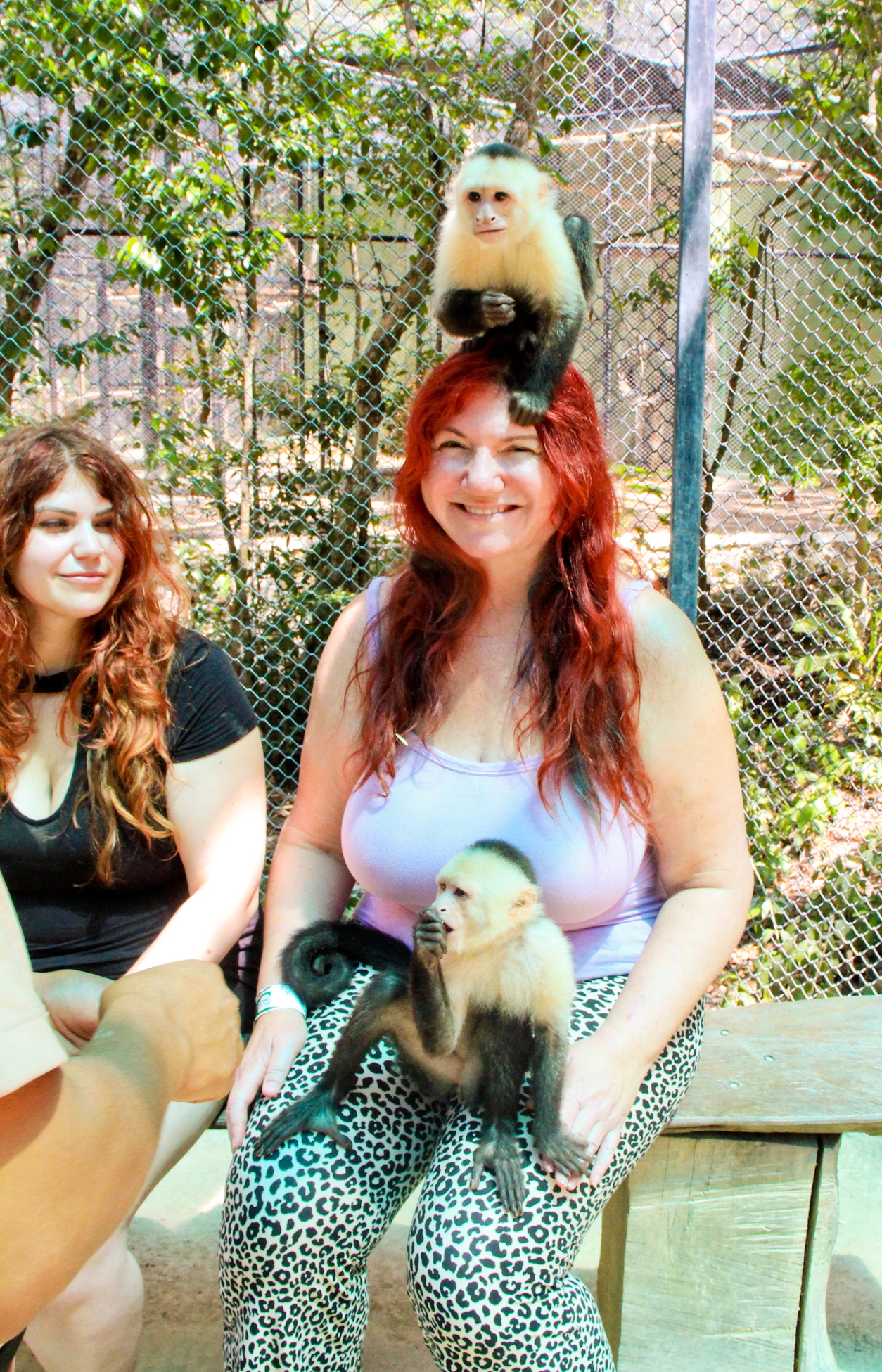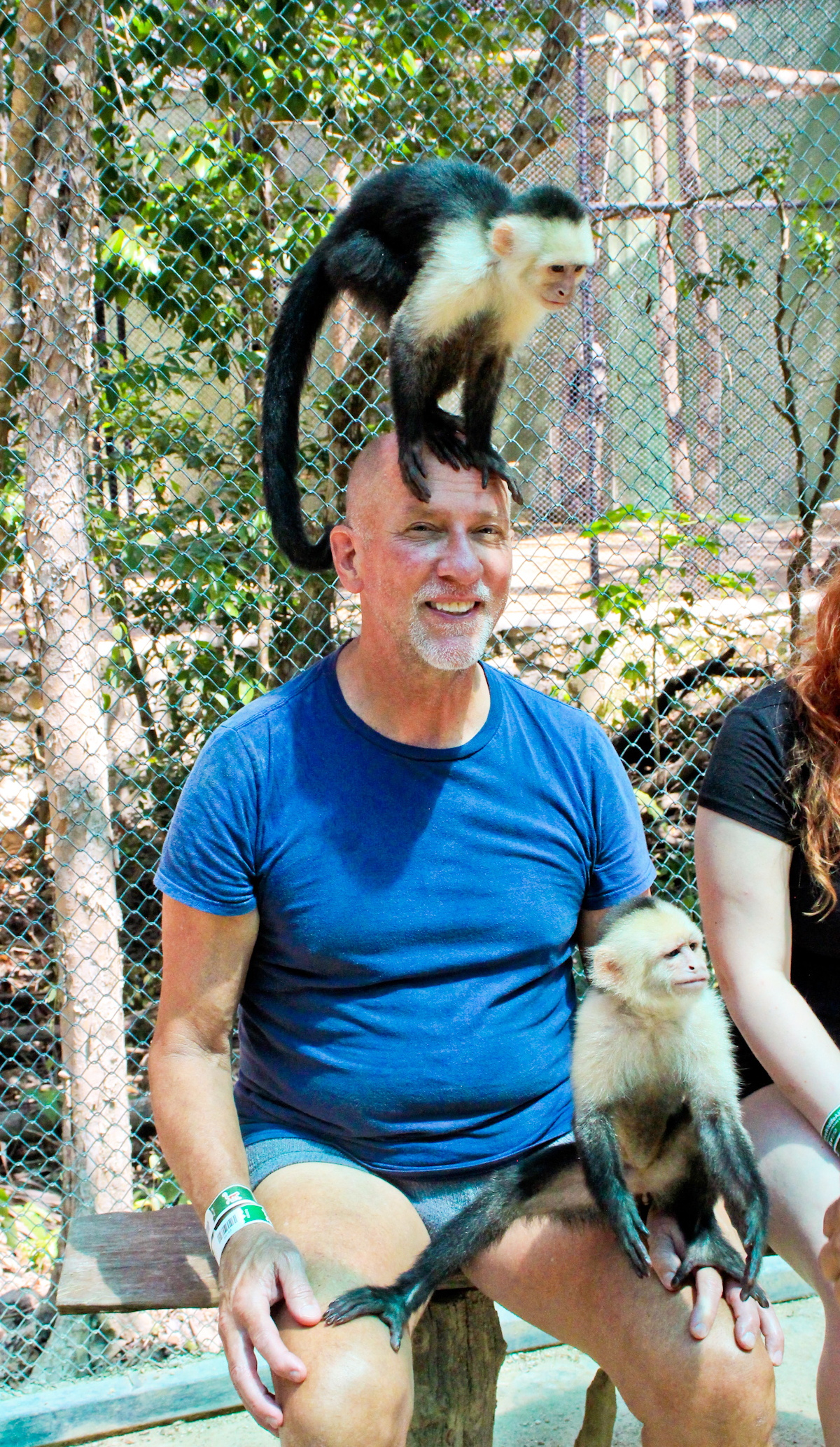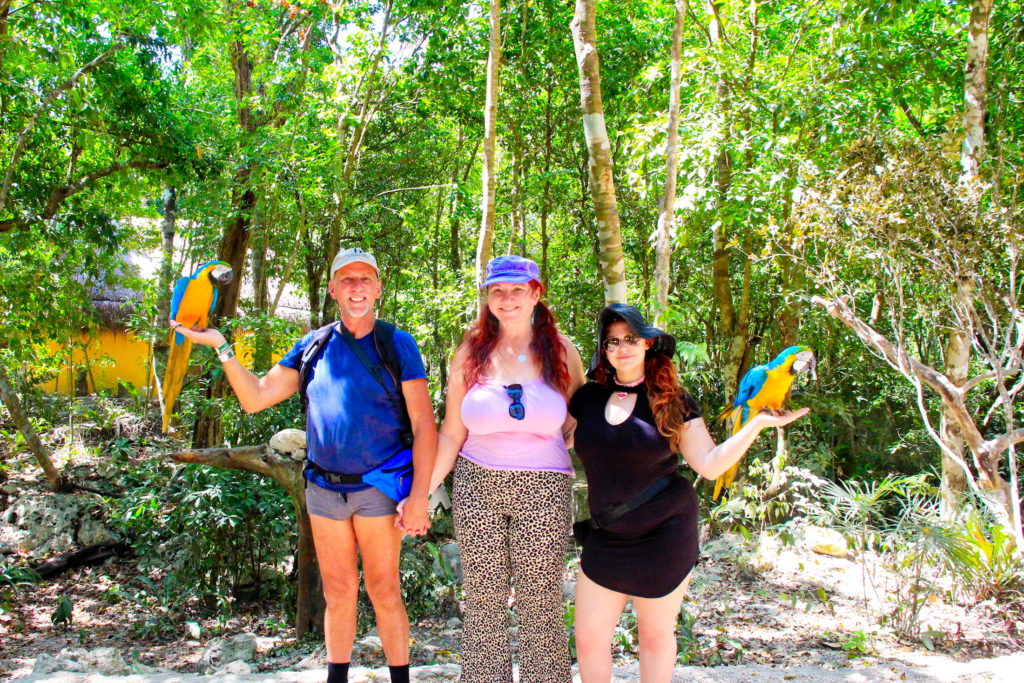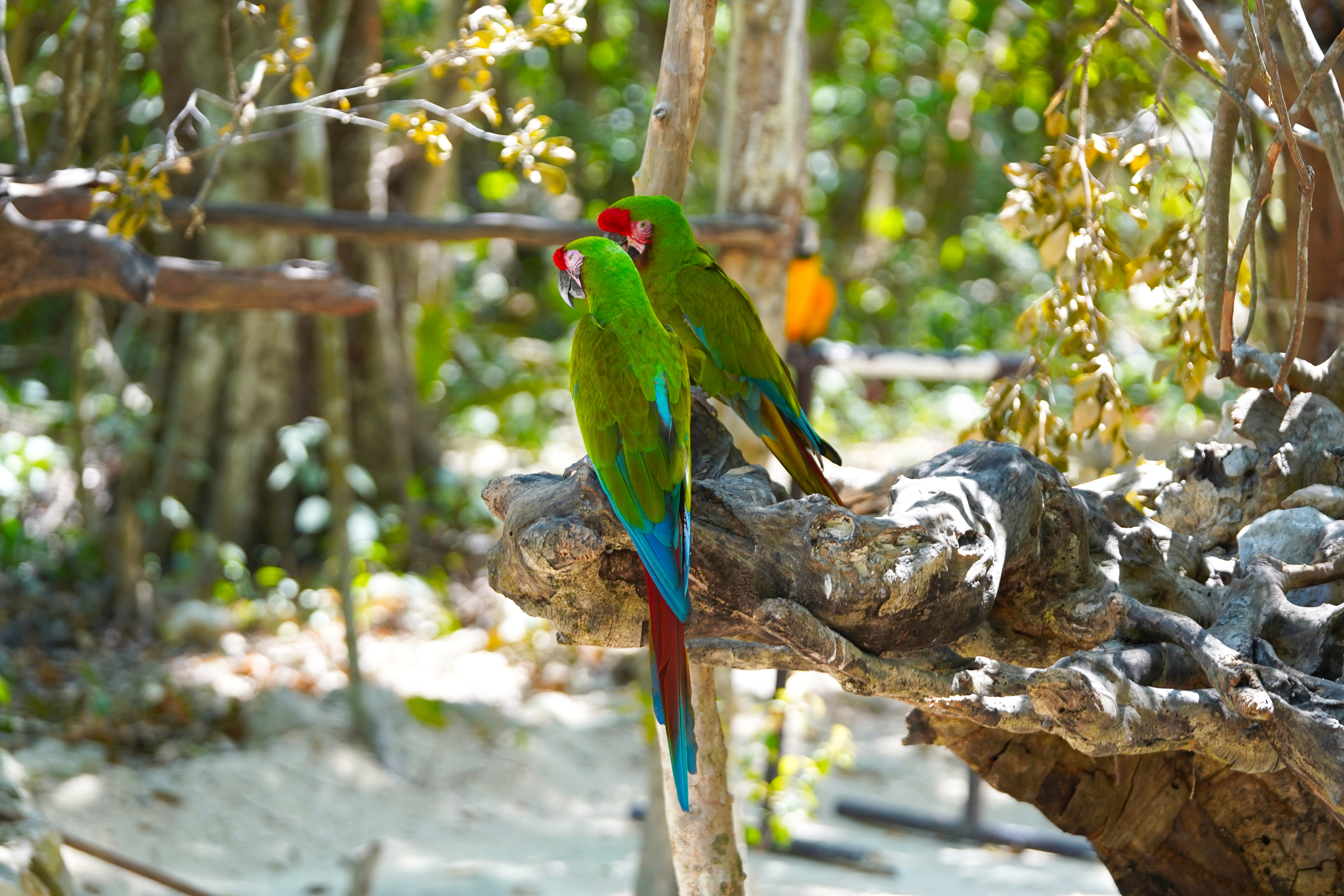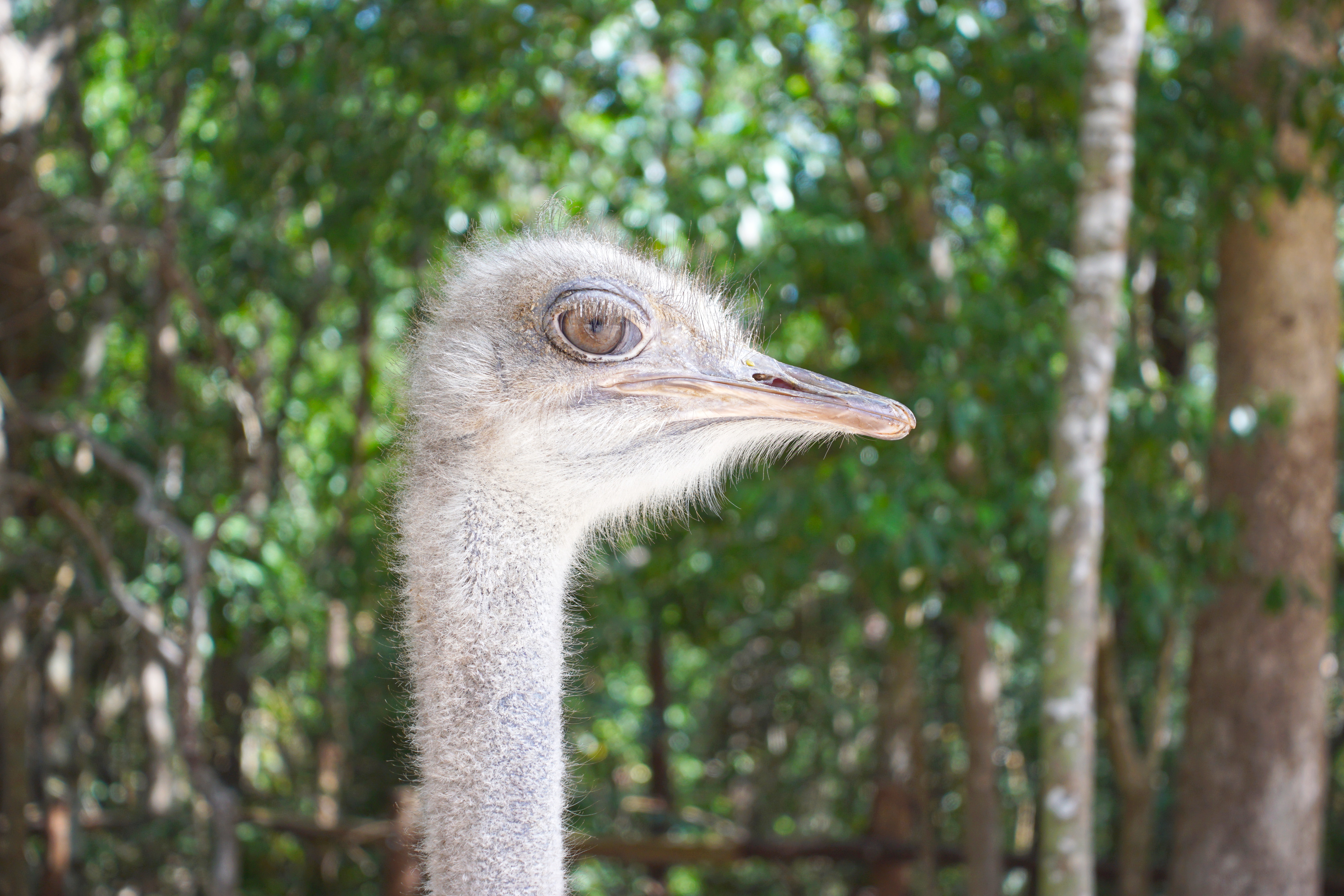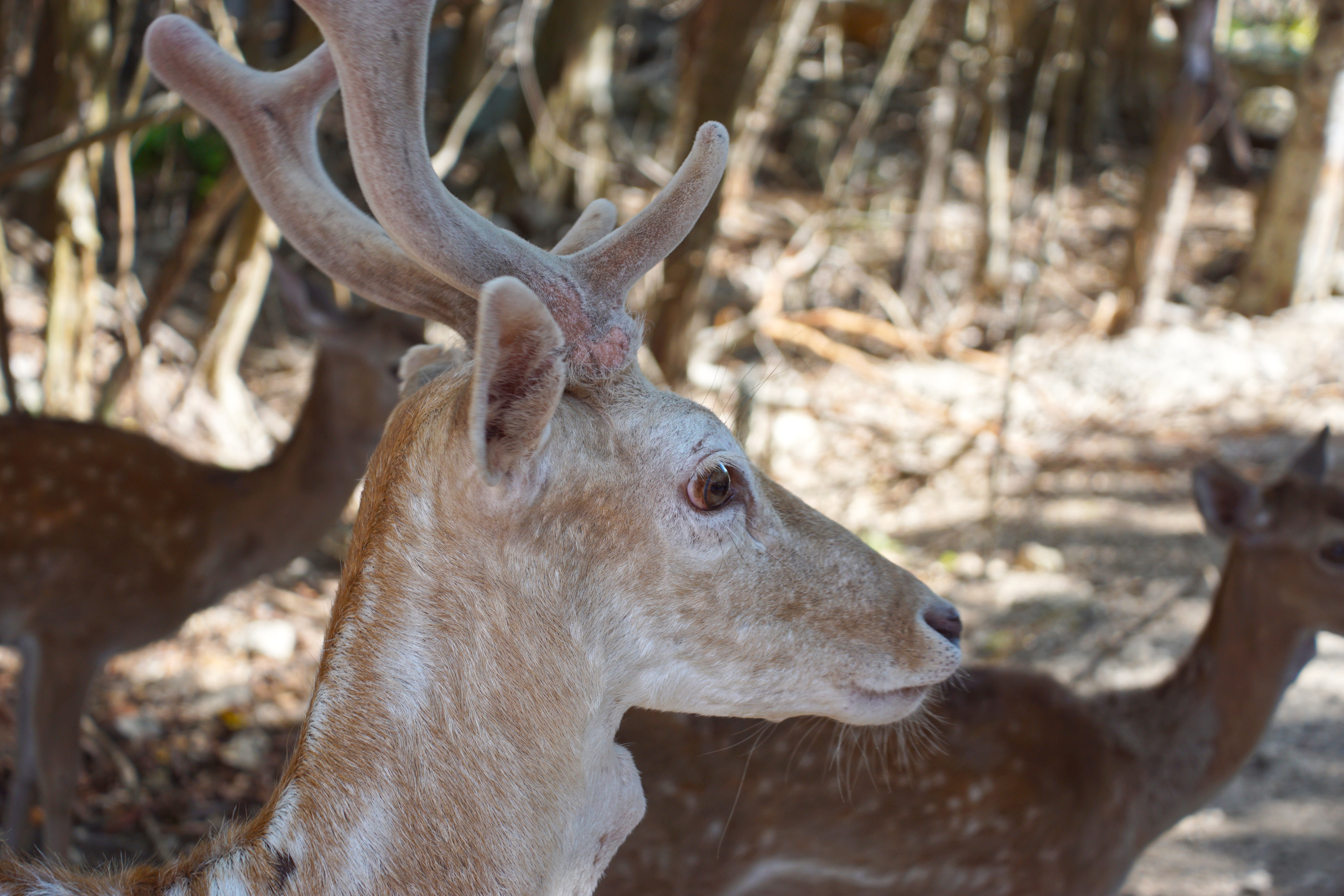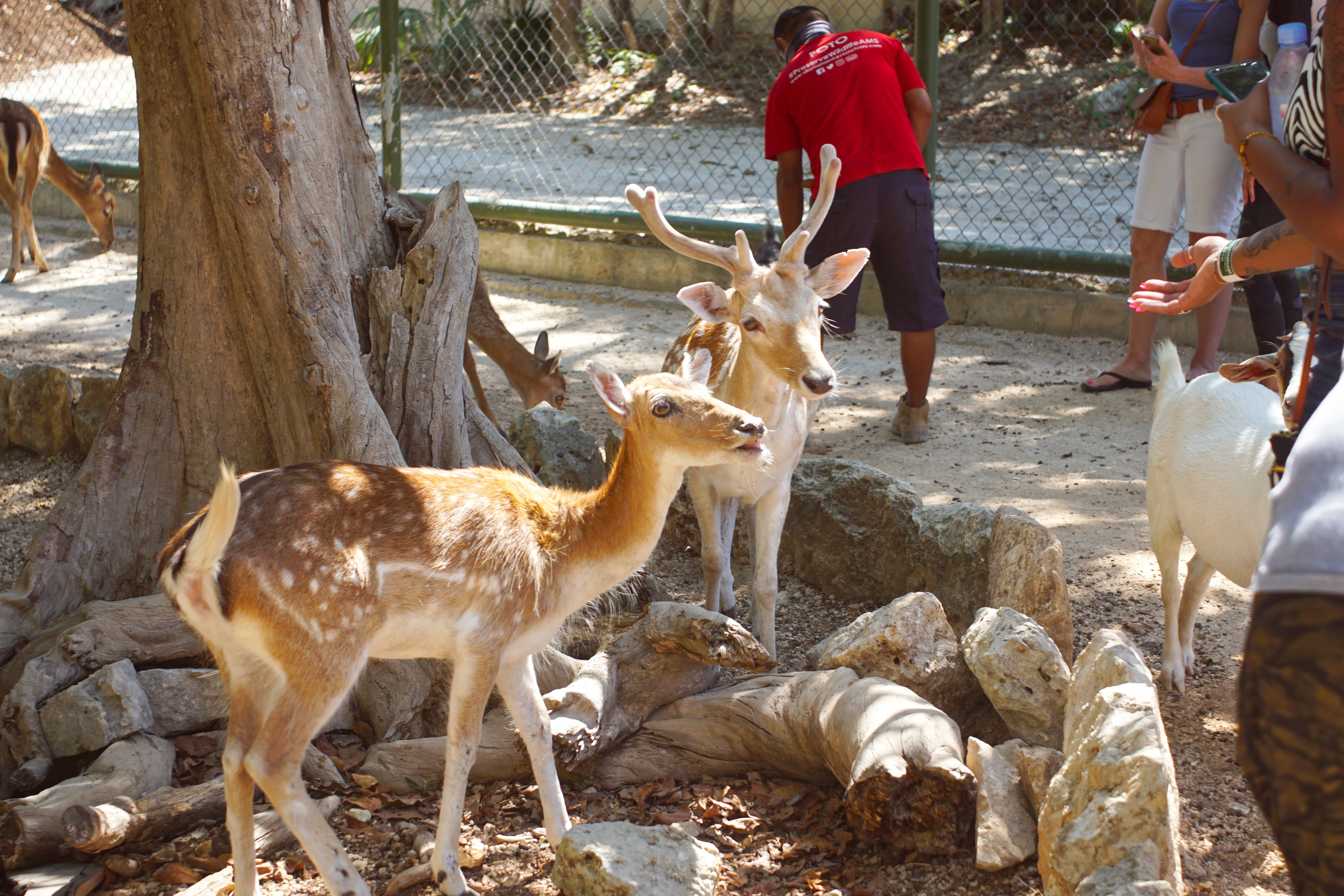We live in San Diego, California, and it’s theoretically easy to travel to Mexican destinations: take Uber or Lyft to the Cross Border Xpress, walk across the border to Tijuana, and fly domestically to Mexico or internationally to a number of locations in Central or South America. Theoretically.
In practice, AeroMexico’s customer service is less than good. Last year, they cancel a round-trip flight to Costa Rica two months before the trip is to begin, and will not refund our payment. Instead, we are told that we have vouchers we have to use within 11 months, or too bad for us. When we call to book the flight, we are directed to a website; that website tells us to call to book the flight. It takes us a while to figure out the exact phone number to call. When we do, the agent says that he cannot see the flights on his display that we can see using the internet. And on and on. Ugh.
So, AeroMexico is not our favorite airline. However, we are forced to use it so that we can spend the money they owe us.
And that’s why we find ourselves traveling to Akumal.
The Flight
We have to first fly to Cancún, Mexico, then drive to Akumal. Despite Cancún being a popular tourist attraction for Americans and Mexican, there are no direct flights from Tijuana.
Once we are aboard, the flight is comfortable enough. Yes, this is during the great Covid-19 Panic of 2020-2021, but we remove our masks briefly so we can take normal photographs of ourselves. (We have been fully vaccinated for months.)
Julie is traveling with us. She is reading “All My Heroes Were Ho’s: Life Lessons from the Dungeon”, a poorly punctuated title, but a good book containing a collection of private and public blogs written by a dear friend, Phyllis Serene.
Short-haul aircraft do not have seats that recline 180 degrees. These aircraft, however, do, because they are not short-haul, despite hauling us a short distance. Typically, aircraft that have seats that recline 180 degrees provide blankets to keep passengers warm when reclining. These aircraft, however, do not.
The poor saps in coach get nothing to eat during the three-hour voyage. However, because we paid about five times as much for our tickets, we are served this delicious pre-made cold sandwich and a bag of fruits and nuts. IN YOUR FACE, COACH PEOPLE!
This is the Great Wall of America. First started in 1909, it reminds us that we Americans do not really live in the land of the free and the home of the brave. <Sigh>
Soon we are flying above an endless sea of clouds, a wonderland in the sky.
Landing in Guadalajara, we spot a Boeing 727 used by the Guardia Nacional. The 727, as you know, no longer flies commercially, and production ended in 1984. They probably got this baby at a discount.
Back when men were men and dogs were wolves, this wouldn’t have happened. Nowadays, a man can bring a tiny dog on the plane with him. And, if between flights, that dog must relieve itself, the Mexican airports are prepared.
Dreamliner
A portion of our journey is on a Boeing Dreamliner. Designed with “passengers in mind, right from the start. With the largest windows of any jet, cleaner, more comfortable air, a smoother ride and space for everyone’s bag, you’ll arrive feeling refreshed and ready to enjoy life.”
When planespotting, the Dreamliner is easy to identify due to the raked wingtips, where the tip has a greater wing sweep than the rest of the wing.
“Instead of plastic window shades, the windows use electrochromism-based smart glass allowing flight attendants and passengers to adjust five levels of sunlight and visibility to their liking, reducing cabin glare while maintaining a view to the outside world, but the most opaque setting still has some transparency.”
Here you can see no shade, full shade, and partial shade of the windows.
Okay, enough about the aircraft already. Let’s get to Akumal!
Akumal
Akumal in a town in the state of Quintana Roo (which sounds like it should be in Australia). The area is known for its wildlife, Mayan archeological sites, and cenotes.
We have an Airbnb directly on the beach. There are hotels nearby, but not too close, so we basically have a private beach. Sweet.
See? This is what happens when you travel during the time when the less adventurous have sequestered themselves: the beach belongs to you.
From the patio, we can walk directly on to the sand and into the water. But we don’t. See that brown stuff at the edge of the beach? That’s Sargassum, a brown macroalgea common to the Caribbean, and important in maintaining the coastal ecosystems. “However, beginning in 2011, unprecedented quantities of Sargassum began inundating coastal areas in record amounts. Coastlines in Brazil, the Caribbean, Gulf of Mexico, and the east coast of Florida saw quantities of sargassum wash ashore up to three feet deep.” It’s pretty nasty to walk through, and it doesn’t go away.
Here you can get a better idea of the extent of this plant. Even if we decided to walk through five or six feet of squishy algae, we would then have to swim through perhaps 20 feet of it before getting to the ocean. We tried it once, but the ocean currents were a bit strong, so it’s just as well.
If there is no Sargassum, it’s because hotel employees rake it into piles, then shovel it into plastic bags. We don’t know if they throw the plants away in their trash, haul it back out to the ocean, or scatter it somewhere in the jungle. Note that the hotel employees must clean the beach every morning, because Sargassum is relentless.
Okay, the Sargassum doesn’t really bother us. We have a great house with constant ocean breezes cooling us in the 80-degree heat. 😎
We know there is a hotel about ten minutes down the beach, so, on our first morning, we walk to it to get coffee. They have a full pastry bar, so we decide to purchase a number of pastries, too. The clerk puts them in a bag for us and I pull out my wallet to pay. “Sir, the food is complementary for hotel guests.” No, I do not correct him, but simply say, “Oh, thank you.” We walk back with our unintentionally complimentary breakfast to enjoy it on our patio.
However, those pastries are a one-time indulgent excess. On the rest of our trip, we eat a more hearty and healthy breakfast.
Our house is air conditioned, but the outside air is warm and humid. So it’s not uncommon for the camera lens to have condensation for ten minutes or so when we first take it outside. The result is soft-core-porn-looking photographs, such as this.
Just to be clear, we do not spend all our time eating healthy foods. There is a bar a short walk up the beach, and we do avail ourselves of its liquid happiness.
Island Life
We aren’t on an island, but we spend so much time by the sea that it feels islandy to us. 😀
The east coast of the Yucatán Peninsula has many bays, but the current is fairly strong even in these secluded waters. Whenever we snorkel, we start on one side of the bay and end on the other, just from the current.
The water is relatively clear, but there is not an abundance of critters. We suspect it’s because of the strength of the current. However, the lack of Sargassum is a welcome treat.
The beaches here are clean and remarkably empty. Just one of the advantages of travel during the shoulder season.
Seafood, fruits, and vegetables provide a healthy lunch. Plus beer. Never forget the beer.
A short walk down the beach is a massage service offered, happily, on the beach. After a hard day of sunning, dining, and relaxing, there is nothing more relaxing than continuing to relax.
Yes, there are other people here in Akumal. Note that, in olden times, folks encased themselves in leather to protect against a motorcycle-related fall. Now, all we need is a helmet, and we’re good to go!
Ek’ Balam
Ekʼ Balam (meaning “the black jaguar”, or “bright star jaguar”, or “night jaguar”, depending on the source) is a Yucatec-Maya archaeological site in Yucatán, occupied from the Middle Preclassic through the Postclassic, although it ceased to thrive as a major city past the Late Classic. Beginning in the Late Preclassic, the population grew and the city expanded throughout the following periods. It eventually became the capital of the polity that controlled the region around the beginning of the Common Era.
At its height from 770 to 840 CE, Ekʼ Balam provides a rich resource of information for understanding northern Classic cities, due to the poor preservation of many other notable northern Maya sites (e.g., Coba, Izamal, and Edzna). It was during this height that the Late Yumcab ceramic complex (750-1050/1100 CE) dominated the architecture and pottery of Ekʼ Balam. The population decreased dramatically, down to 10% of its highest, during the Postclassic period as Ekʼ Balam was slowly becoming vacant.
The function of many of these structures is conjectural, as exemplified by designating them simply as “structures.” Still, it has its own beauty.
Only the center of Ek’ Balam has been excavated.
The entire settlement covered about 12 square kilometers but only 1 square mile can be viewed.
Ek’ Balam was at its peak from 770 to 840 CE.
45 structures on the site have been mapped.
The site is surrounded by two defense walls and the interior city has a multitude of smaller walls.
Buildings were designed in the northern Petén architectural style.
Ek’ Balam is composed of several temples, two palaces and a large pyramid (El Torre) which is located in the center of the city.
We are not permitted to enter this structure, and we can see that it is full of large rocks. As a perspective, this was built in the 7th or 8th century CE. The Acropolis, made of polished marble, was constructed 1,000 years earlier by the Greeks.
I wonder if these piles of rocks were once painted. I suppose most archeologists would image them painted with sacred images of gods and demons, but maybe that wasn’t the case. Maybe they were painted with fun colors and cool designs, or perhaps portraits of some of the city’s prettier women.
There is a hole in the ground, probably a well. They won’t let us near it, probably so someone won’t yell, “This.” “Is.” “Ek.” “Balam!” and kick us in.
Some of these interiors seems to be open for exploring. Let’s take a look.
I suppose that these doorways once held doors to protect whatever wonders await us inside.
Well! This room is little more than a closet. As in, why did you bother to stack so many rocks to build such a tiny room? We will never know.
Our pet has an idea that these rooms could have been places for royalty to find moments of intimacy. While it may be true for us, we will never know if it is true for those ancient Mayans.
“The Oval Palace contained burial relics and its alignment is assumed to be connected to cosmological ceremonies.” Okay, this is what archeologist guys always say. As if, 1,200 years ago, some guy said, “Hey, let’s stack thousands and thousands of rocks, then stick in some relics for dead guys. Okay, and we can use it for a few ceremonies, too.” Come on, archeologist guys! You can do better than that! How about, “This structure was used as a training ground for athletes. They ran up the stairs, around the little oval at the top, then down the stairs. Umm, blindfolded. Carrying someone’s mother on their back.” Now that’s an important structure!
From the top, I can see most of the restored courtyard, including the Acropolis, “believed to contain the tomb of Ukit Kan Leʼk Tokʼ, an important ruler in Ekʼ Balam.” Let’s go take a look, shall we?
This doesn’t appear to be either OSHA-compliant or handicap-accessible. Still, we embark on our journey to see what magnificence awaits us at the apex.
This area is interesting because we can see that there are intricate designs made from (perhaps) stucco decorating the walls, and walls where the stucco has degraded. This indicates that all the buildings were decorated thusly before the rain and the forest reclaimed them.
According to the internet, “this is the temple in which Ukit Kan Leʼk Tokʼ was buried, called El Trono (‘The Throne’). The doorway is in the shape of a monster-like mouth, possibly depicting a jaguar.” Note: I’m sure they mean, “depicting a jaguar’s mouth“. However, a jaguar’s mouth looks nothing like the teeth depicted here, so we are sticking with “monster”.
A fellow with some kind of hat, a bow tie, a very impressive loin cloth, and wings, stands behind defensive netting which does little to deter detritus from collecting at his feet. At one time, he may have held a sword, an umbrella, or a spatula; however, his broken hands offer no clue.
At the bottom are obviously feet. At the top is probably a head. So what’s going on in between? We suspect that the folks reconstructing this stela were using poetic license.
We finish our ascent of the acropolis and ask another climber to photograph us. It looks weird, right? Like, where is the distorted arm reaching upwards, holding the camera? See, here’s the thing: if you don’t spend all your time on “social” media, you actually develop social skills and can actually socialize with people, requesting favors.
This is an almost-180 degree view of the jungle surrounding Ek’ Balam. I don’t know why those ancient Mayans built stuff in the middle of the jungle rather than by a river or the sea, but I guess they had their reasons. It is an impressive sight, isn’t it?
Dealing with the Sun
The day is hot, and we are feeling a bit desiccated. Sun-damaged skin is bad, mmmmmkay?
So we liberally apply conditioning lotion on our skin, and soon everything is feeling good.
Critters
Mexico has an abundance of flora and fauna and, while the flora is interesting, the fauna tends to interact a bit more. Let’s take a look, shall we?
Just to prove my point, this tree, with its one orifice, does nothing. Yes, the orifice might suggest some activity has taken place, but not here and not now. We watch the tree for some hours, then decide to press on.
A black spiny-tailed iguana (Ctenosaura similis) prowls the trees of Mexico. Black spiny-tailed iguanas are excellent climbers, and prefer a rocky habitat with plenty of crevices to hide in, rocks to bask on, and nearby trees to climb. They are diurnal and fast moving, employing their speed to escape predators but will lash with their tails and bite if cornered. The Guinness Book of World Records lists this as the world’s fastest lizard, with a maximal sprint speed of 34.6 km/h.
They have a saying in Mexico. “In the trees or on the sand, Mexican iguanas still taste good.” Yeah, it rhymes in Spanish.
The brown pelican (Pelecanus occidentalis) is a piscivore, primarily feeding on fish. As the brown pelican flies at a maximum height of 18 to 21 m (60 to 70 ft) above the ocean, it can spot schools of fish while flying. When foraging, it dives bill-first like a kingfisher, often submerging completely below the surface momentarily as it snaps up prey.
There are (apparently) a lot of fish in front of our house, and we are treated to regular displays of avian agility.
Akumal Monkey Sanctuary
Let’s go visit the Akumal Monkey Sanctuary & Rescued Animals. Because, as you know, Mexico is famous for monkeys.
“We are a space created with the purpose of housing some species of wildlife or fauna in the process of domestication, regardless of their origin, that is, without making distinction in native or introduced species. Generally, they are specimens that have been mainly affected by human actions or natural phenomena that negatively influence the environment, preventing in most cases the reintroduction to their natural environment and consequently, remaining for life under human care. Currently, more than 200 specimens from 55 different species have been rescued.”
“Disproportionately long limbs and long prehensile tails make [Spider monkeys] one of the largest New World monkeys and give rise to their common name. Spider monkeys live in the upper layers of the rainforest, and forage in the high canopy, from 25 to 30 m (82 to 98 ft). They primarily eat fruits, but will also occasionally consume leaves, flowers, and insects. Due to their large size, spider monkeys require large tracts of moist evergreen forests, and prefer undisturbed primary rainforest. They are social animals and live in bands of up to 35 individuals but will split up to forage during the day. Recent meta-analyses on primate cognition studies indicated spider monkeys are the most intelligent New World monkeys. They can produce a wide range of sounds and will “bark” when threatened; other vocalisations include a whinny similar to a horse and prolonged screams.
They are an important food source due to their large size, so are widely hunted by local human populations; they are also threatened by habitat destruction due to logging and land clearing. Spider monkeys are susceptible to malaria and are used in laboratory studies of the disease.”
Nice.
These Golden-headed Lion Tamarin, as with many of the inmates here, are in a cage that makes it difficult to see and photograph them.
“Its home range may be large in order to provide a sufficient amount of easily depletable fruit and prey foraging sites over the long term. On average it defends home ranges that are 123 hectares. Space is not necessarily used exclusively, and golden-headed lion tamarin groups may occupy areas that overlap to some extent at their borders.”
That’s a lot of space for such a little guy.
I think this is a species of spider monkey. He looks pretty chill, doesn’t he?
Common squirrel monkeys are polygamous with a multiple-male, multiple-female group structure. But not here. Since these are rescued animals, their lives are a bit more lonely.
Sad.
We take many photographs of the residents of the sanctuary. And the sanctuary thoughtfully provides us with their own photographs (which are nicer than ours)!
Even more photographs of us monkeying around!
Akumal Non-Monkey Sanctuary
Remember, the official name is the Akumal Monkey Sanctuary & Rescued Animals. So let’s take a look at some of the other critters here.
The sanctuary has a number of Macaw species, including this blue-and-yellow Macaw (a really big parrot), which we are allowed to be used as a perch to have our photographs taken.
There are three of us, but only two photo-worthy birds. Yeah, nothing really happens; we just stand there, quietly, or the birds get upset.
They do not explain why a pig needs to be rescued. There are about 1,000,000,000 pigs in the world, so it’s not like they are endangered. We suspect it’s only because baby pigs are cute. ?
Please enjoy these other non-monkeys.
Akumal Monkey Sanctuary Cenote
There is a plethora of cenotes in the Yucatán Peninsula. Cenotes (sin-note-tay) are formed by dissolution of rock and the resulting subsurface void and the subsequent structural collapse. Rock that falls into the water below is slowly removed by further dissolution, creating space for more collapse blocks. It is likely that the rate of collapse increases during periods when the water table is below the ceiling of the void, since the rock ceiling is no longer buoyantly supported by the water in the void. The Monkey Sanctuary has one, so let’s take a look.
Images on the internet frequently show cenotes as a being entered only from a small hole in the ground, but this one is fairly open to the sky. What it means is that the center is very bright, and the watery edges are very dark.
At a place with more light, we can see that the water is clear and that the bottom of the cenote is not too different than the top.
The water of the cenote travels from somewhere hidden and to somewhere hidden. This is but a small section of it. We can swim a few dozen meters into the darkness, but eventually the river flows through the rocks where we cannot follow.
The water is not deep, nor it is cold. We swim in the underground river carved through limestone, enjoying the break from the hot Yucatán summer.
Yal-Ku Lagoon
Yal-Ku Lagoon is small estuary where the mixture of fresh water and salt water creates an abundance of food and, consequently, fish. The water is clear, fairly shallow, and perfect for snorkling.
The lagoon is large, and sunscreen is forbidden. That’s a sunburn waiting to happen, but, hey, that’s part of the Mexican adventure, right?
Swimmin’ wid da fishes.
After a few hours of playing, we’ve spent enough time in the sun, and it’s time to return to our house.
Bathing
Throughout history, societies devised systems to enable water to be brought to population centers.
The oldest accountable daily ritual of bathing can be traced to the ancient Indians. They used elaborate practices for personal hygiene with three daily baths and washing. These are recorded in the works called grihya sutras and are in practice today in some communities.
Spanish chronicles describe the bathing habits of the peoples of Mesoamerica during and after the conquest. Bernal Díaz del Castillo describes Moctezuma (the Mexica, or Aztec, king at the arrival of Cortés) in his Historia verdadera de la conquista de la Nueva España as being “…Very neat and cleanly, bathing every day each afternoon…”. Bathing was not restricted to the elite, but was practised by all people; the chronicler Tomás López Medel wrote after a journey to Central America that “Bathing and the custom of washing oneself is so quotidian (common) amongst the Indians, both of cold and hot lands, as is eating, and this is done in fountains and rivers and other water to which they have access, without anything other than pure water…”
Ancient Greece utilized small bathtubs, wash basins, and foot baths for personal cleanliness. The earliest findings of baths date from the mid-2nd millennium BC in the palace complex at Knossos, Crete, and the luxurious alabaster bathtubs excavated in Akrotiri, Santorini. A word for bathtub, asaminthos (ἀσάμινθος), occurs eleven times in Homer. As a legitimate Mycenaean word (a-sa-mi-to) for a kind of vessel that could be found in any Mycenaean palace, this Linear B term derives from an Aegean suffix -inth- being appended to an Akkadian loan word with the root namsû (“washbowl, washing tub”). This luxurious item of the Mycenaean palace culture, therefore, was clearly borrowed from the Near East. Later Greeks established public baths and showers within gymnasiums for relaxation and personal hygiene. The word gymnasium (γυμνάσιον) comes from the Greek word gymnos (γυμνός), meaning “naked.”
Ancient Rome developed a network of aqueducts to supply water to all large towns and population centers and had indoor plumbing, with pipes that terminated in homes and at public wells and fountains. The Roman public baths were called thermae. The thermae were not simply baths, but important public works that provided facilities for many kinds of physical exercise and ablutions, with cold, warm, and hot baths, rooms for instruction and debate, and usually one Greek and one Latin library. They were provided for the public by a benefactor, usually the Emperor.
Before the 7th century, the Japanese were likely to have bathed in the many springs in the open, as there is no evidence of closed rooms. In the 6th to 8th centuries (in the Asuka and Nara periods) the Japanese absorbed the religion of Buddhism from China, which had a strong impact on the culture of the entire country. Buddhist temples traditionally included a bathhouse (yuya) for the monks. Due to the principle of purity espoused by Buddhism these baths were eventually opened to the public. At the beginning of the Edo period (1603–1868) there were two different types of baths. In Edo, hot-water baths (‘湯屋 yuya) were common, while in Osaka, steam baths (蒸風呂 mushiburo) were common. At that time shared bathrooms for men and women were the rule. These bathhouses were very popular, especially for men. “Bathing girls” (湯女 yuna) were employed to scrub the guests’ backs and wash their hair, etc. In 1841, the employment of yuna was generally prohibited, as well as mixed bathing. The segregation of the sexes, however, was often ignored by operators of bathhouses, or areas for men and women were separated only by a symbolic line.
Christianity has always placed a strong emphasis on hygiene. Despite the denunciation of the mixed bathing style of Roman pools by early Christian clergy, as well as the pagan custom of women bathing naked in front of men, this did not stop the Church from urging its followers to go to public baths for bathing, which contributed to hygiene and good health according to the Church Fathers, Clement of Alexandria and Tertullian. The Church also built public bathing facilities that were separate for both sexes near monasteries and pilgrimage sites; also, the popes situated baths within church basilicas and monasteries since the early Middle Ages.
Public opinion about bathing began to shift in the middle and late 18th century, when writers argued that frequent bathing might lead to better health. Two English works on the medical uses of water were published in the 18th century that inaugurated the new fashion for therapeutic bathing. One of these was by Sir John Floyer, a physician of Lichfield, who, struck by the remedial use of certain springs by the neighbouring peasantry, investigated the history of cold bathing and published a book on the subject in 1702. The book ran through six editions within a few years and the translation of this book into German was largely drawn upon by Dr J. S. Hahn of Silesia as the basis for his book called On the Healing Virtues of Cold Water, Inwardly and Outwardly Applied, as Proved by Experience, published in 1738.
“Turkish” baths (based on the traditional Muslim bathhouses which are derived from the Roman bath) were introduced to Britain by David Urquhart, diplomat and sometime Member of Parliament for Stafford, who for political and personal reasons wished to popularize Turkish culture. In 1850 he wrote The Pillars of Hercules, a book about his travels in 1848 through Spain and Morocco. He described the system of dry hot-air baths used there and in the Ottoman Empire which had changed little since Roman times. In 1856 Richard Barter read Urquhart’s book and worked with him to construct a bath. They opened the first modern hot water bath at St Ann’s Hydropathic Establishment near Blarney, County Cork, Ireland.
The use of a bath in religious ritual or ceremonial rites include immersion during baptism in Christianity and to achieve a state of ritual cleanliness in a mikvah in Judaism. It is referred to as Ghusl in Arabic to attain ceremonial purity (Taahir) in Islam. All major religions place an emphasis on ceremonial purity, and bathing is one of the primary means of attaining outward purity. In Hindu households, any acts of defilement are countered by undergoing a bath and Hindus also immerse in Sarovar as part of religious rites. In the Sikh religion, there is a place at Golden Temple where the leprosy of Rajni’s husband was cured by immersion into the holy sacred pool, and many pilgrims bathe in the sacred pool believing it will cure their illness as well.
Life is a Beach
The sun is setting on our vacation, and we must return to normal life.
¡Hasta la vista!





















